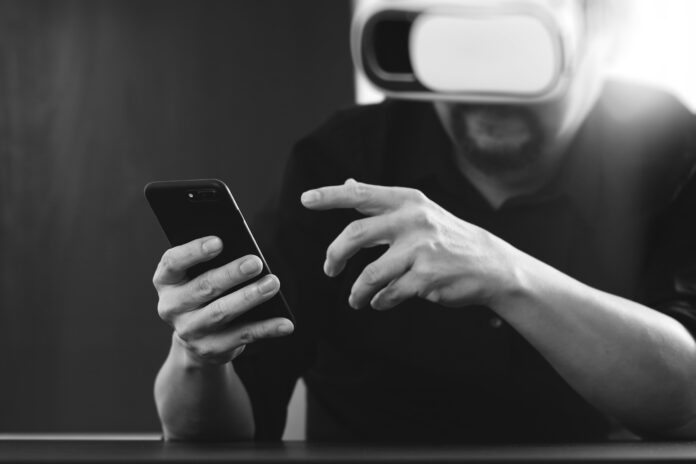Consumers dislike current device options and worry about social perception and privacy when it comes to XR, according to a report from Ericsson Consumer Lab
Options and adoption of augmented, virtual and mixed-reality devices, applications and services are moving more slowly than expected, with most consumers’ experiences limited to uses such as wayfinding and photo filters. Bulky devices and limited content choices are part of the problem, but people are also worried about the social consequences of wearing XR devices in public, according to a new report from Ericsson Consumer Lab—they are uneasy both about how other people will perceive them for wearing XR glasses and about being a bystander scanned by an AR device and where such content might end up.
“Consumers are curious, but so far, no revolution has taken place, XR devices, AR, VR and Mixed Reality (MR) glasses and headsets are still mostly a curiosity,” the report says. Comparatively, “the smartphone’s place in consumers’ lives is indisputable, it’s nearly an extension of users’ bodies. Its position and how intertwined it is in our lives makes it hard for consumers to imagine another type of device replacing it.” The smartphone is also the entry point for most people’s experience of AR, particularly filters among younger users, and navigation, translation and virtual try-on experiences for other age groups.
The Consumer Lab previously found that between 2021 and 2023, there was a 50% increase in the amount of daily time that 5G users spent on smartphone AR experiences.
Smartphones aren’t a perfect vessel for XR, though: The screens are relatively small, it’s not an immersive experience, and holding up a device for extended periods can strain your arm. Still, the report found that overall satisfaction level among active XR users is about 47%, but users who combine smartphone AR with VR/AR/MR devices report statistically significant higher satisfaction, around 54%.
The report lays out a number of advantages in centering XR experiences around a combined or tethered smartphone/XR device, including being able to reduce or eliminate the amount of computing that has to be done on the device itself, so that the device’s size and weight could be reduced and performance could be improved. But that is still expected to just be a first step in a multi-stage process of more widespread XR adoption. We are currently in an initial stage of basic augmented reality experiences being widely available, which is expected to continue evolving for at least another one to two years and be dominated by the smartphone as the primary device. The second stage will involve a shift where “more location-based and geospatially aware experiences become accessible to consumers,” the report said, and portable XR devices act as “companions” to smartphones. The third stage would be reached when more advanced and native XR experiences are widely available, and standalone augmented realit devices emerge to support those experiences.
The report is based on an online survey in 10 global markets of 10,000 early adopters between the ages of 15 and 69, who use smartphone AR apps or AR/VR/MR headsets or glasses at least every other week or plan to do to in the next five years. In addition to the survey, Ericsson Consumer Lab conducted nearly two dozen in-depth interviews with users, industry experts and XR start-up companies across four countries. “While early adopters are a small fraction of consumers globally, their early adopter profile makes these individuals important when exploring how wider groups of consumers might use these technologies in the future,” the company noted.
The report also said that today, about 10% of consumers use smartphone AR and VR/AR/MR devices, but that is expected to double in the next five years—as along as experiences and devices improve. And while most consumers reported that home is the primary use location for XR, 75% want to be able to use AR/MR devices beyond the home. Seven out of 10 surveyed consumers said they were willing to pay a 20% premium, on average, for that capability, especially if they were at an arena or venue where something like a tailored sports or art event experience might be offered.
Read more from Ericsson Consumer Lab here.

